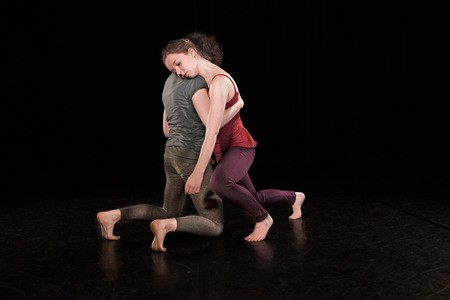Colleagues Carnie, Richards and Wright have also prepared works of art for the Hybrid Bodies exhibition. Like Bachmann's, their pieces will include sound and light, along with video projection and sculptural elements, such as a glass heart.
The feedback from a pilot exhibition held in Toronto last year by patients and members of the medical community were both overwhelming and encouraging, says Ross. "Watching my patients see the art installation gave me a moment of goose bumps. You could tell that the pieces grasped their souls and gave form to experiences they had, but didn't yet have words for."
Bachmann stresses that the research conducted in Hybrid Bodies, as part of the PITH project, is neither art therapy nor medical illustration.
"The aspects of heart transplants we looked at were both emotional and psychological, concepts that are not as well covered as the scientific aspects of heart transplantation. The role of the PITH team is to educate patients and health care professionals, the artists are involved to help bring the amazing medical research to a larger public and to broaden the discussion around transplantation."
Ross concurs. " I wasn't sure what to expect from Hybrid Bodies but the pilot project art installation held in Toronto was very powerful, so different than reading words," she said. "The whole experience was very eye-opening."
Full details about the exhibition are available on the PHI Centre website.
Hybrid Bodies: Art is where the heart is
A Concordia University Fine Arts faculty member is the principal investigator of an art-science research project that explores the emotional and psychological impact of heart transplantation in patients.
Ingrid Bachmann, associate professor of fibres and material practices in the Department of Studio Arts, says Hybrid Bodies: An Artistic Investigation into the Experience of Heart Transplantation represents a new approach to how scientific knowledge is disseminated because it involves artists as active researchers rather than simply interpreters of data.
"In Hybrid Bodies we looked at how the arts can be used to give voice to heart transplant recipients' experiences and incorporate these experiences into public discourse," says Bachmann. "Like with the discourse surrounding phantom limb pain, once we put a name to patient experiences, we'll be better positioned to discuss them."
The results of the Hybrid Bodies project - the creation of art installations representing the non-physical effects of heart transplantation, funded by the Social Sciences Humanities Research Council of Canada - will be on display in a public exhibition at Montreal's PHI Centre from January 23 to March 15, 2014. Bachmann and her collaborators will discuss their process as well as some of their findings at at a conference (also at PHI Centre) on January 22.
 The Hybrid Bodies exhibition will include Ingrid Bachmann's The Gift.
The Hybrid Bodies exhibition will include Ingrid Bachmann's The Gift.
Bachmann was approached by Dr. Heather Ross, University of Toronto professor of medicine and Ted Rogers and Family Chair in Heart Function, to join the medical professional's PITH (Process of Incorporating a Transplanted Heart) group, which also includes Dr. Pat McKeever, senior scientist at the Bloorview Research Institute, and Dr. Margrit Shildrick, professor in the School of Sociology at Queen's University (Belfast, Ireland).
"The idea behind working with artists starting at the onset of the project was to be innovative and provocative in the area of knowledge translation," says Ross. "In the medical world, research results are disseminated through publication. We wanted to use different modalities to present the results of our study within a broader context."
In their research, Bachmann and her international team - artists Alexa Wright (University of Westminster), Catherine Richards (University of Ottawa) and Andrew Carnie (Southampton University) - reviewed PITH video of interviews with post-operation heart transplant patients. With the immediate objective of increasing overall public awareness of the complexities of organ transplantation and the ultimate goal of improving patient care, the artists created work to represent the effects of the surgery they identified in the patients' behaviour.
When Bachmann first saw the PITH footage, she was struck by small but noticeable differences between the words and the actions of a patient. "What was significant in the footage was gesture. The patients may have said one thing about how they were feeling, but their actions told a different story. Transplant survivors live with paradoxes: ill heart/new heart, donor/receiver," she said.
In developing her own piece, an installation featuring dancers, sound and light, Bachmann sought "to give a bodily experience to something that is subtle, something that is altered and different."
"Transplant survivors are changed: they often choose a new birthday: the date of their transplant," she explains. "They also feel very strongly that they've been given a gift - the gift of life."

 Andrew Carnie's A Change of Heart. ABOVE: Alexa Wright's Heart
Andrew Carnie's A Change of Heart. ABOVE: Alexa Wright's Heart
Images courtesy of the artists.

